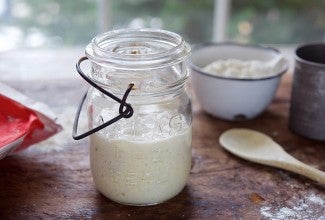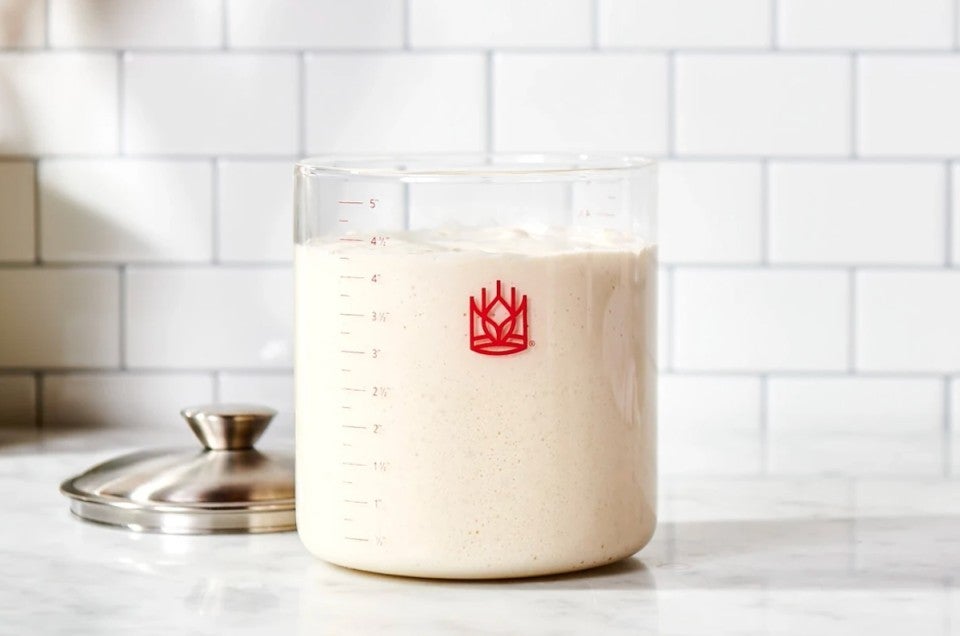


When it comes storing sourdough starter, the basic answer is easy: in a lidded container either at room temperature or in the refrigerator.
There’s a little more to it than that, though. Read on for everything you need to know on how to store starter.
Ideally, you want to store starter in a lidded container large enough to hold triple its volume. This way, it has ample room to grow and expand after you feed it. It’s also useful to choose a container with a wide opening, so you can easily stir the starter directly in the container. (Our favorite tool for the job: a dough whisk.)
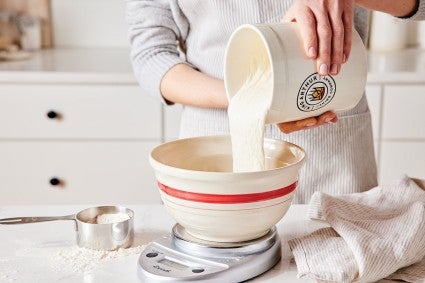
It’s handy to use a clear glass or translucent plastic container so you can track its growth after feeding. Containers made of stoneware, plastic, stainless steel, and enameled metal are also suitable.
Whatever vessel you choose, the lid should fit securely, to avoid potential spills and prevent contamination. But the lid shouldn’t be airtight, because starters emit gasses that can build up in the vessel and cause a messy blowout.
For easy and convenient sourdough storage, we sell a few different sourdough crocks. They are large enough to handle growing starter, with a wide mouth for stirring and loose-fitting lids to allow gasses to escape while still keeping starter fresh. They range from glazed ceramic crocks to a glass container with red markings on the side in 1/4" increments, making it easy to watch your starter's progress as it grows.
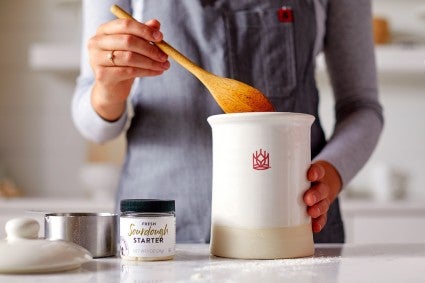
You can store your starter at room temperature or in the fridge. If you’re a frequent sourdough baker, keeping your starter at room temperature is the most convenient option, because it’s easy for your starter to be ready to bake when you are. The downside of room temperature storage is that the starter requires more maintenance; it should be fed frequently. But don’t worry — we have suggestions for how to use up the discard generated by frequent feedings.
If you bake sourdough more occasionally, you may want to keep your starter in the fridge; this is a more low-maintenance option that only requires feeding it once a week.
How to store sourdough starter in the fridge: Keep covered starter anywhere in the fridge, though ideally not in places that run warm, such as the very top shelf or the door. When kept in the fridge, starter needs to be fed once a week. After your weekly feed, we recommend leaving it on the counter for a few hours after feeding to start fermenting before returning it to the fridge. Then, a day or two before you want to bake, give it a couple of feedings at room temperature (roughly every 12 hours) before using it to bake.
How to store sourdough starter at room temperature: Keep covered starter in a convenient place that’s comfortably room temperature — not too hot, not too cold. When kept at room temp, starter needs to be fed twice daily, about every 12 hours.
See more here: Feeding and Maintaining Your Sourdough Starter
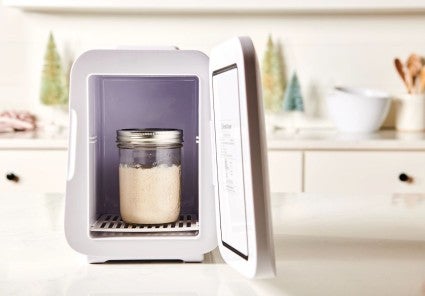
Frequent sourdough bakers may want to upgrade their storage setup with a new appliance that we love: the Sourdough Home. This tool allows you to precisely control the temperature of your starter, so you can bake with sourdough when you want to.
By heating or cooling your starter, you can keep it in an ideal environment regardless of room temperature, affecting its growth rate, feeding schedule, flavor profile, and more. Simply place your starter inside, close the door, and select your desired temperature.
Colder temperatures will slow growth, so that your starter rises over a longer period of time (meaning you don’t have to feed it as frequently). Warmer temperatures, meanwhile, speed up growth, so you can get your starter revved up in time to start mixing your next batch of bread. And, helpfully, this appliance allows you to keep your starter at a middle ground somewhere between room temperature and the fridge; by doing so, you can feed your starter once a day, instead of choosing between twice a day and once a week. Learn more about how to use the Sourdough Home here: Your starter is missing one crucial ingredient: temperature.
Looking for more sourdough education? Visit our guide: How to Bake Sourdough.
